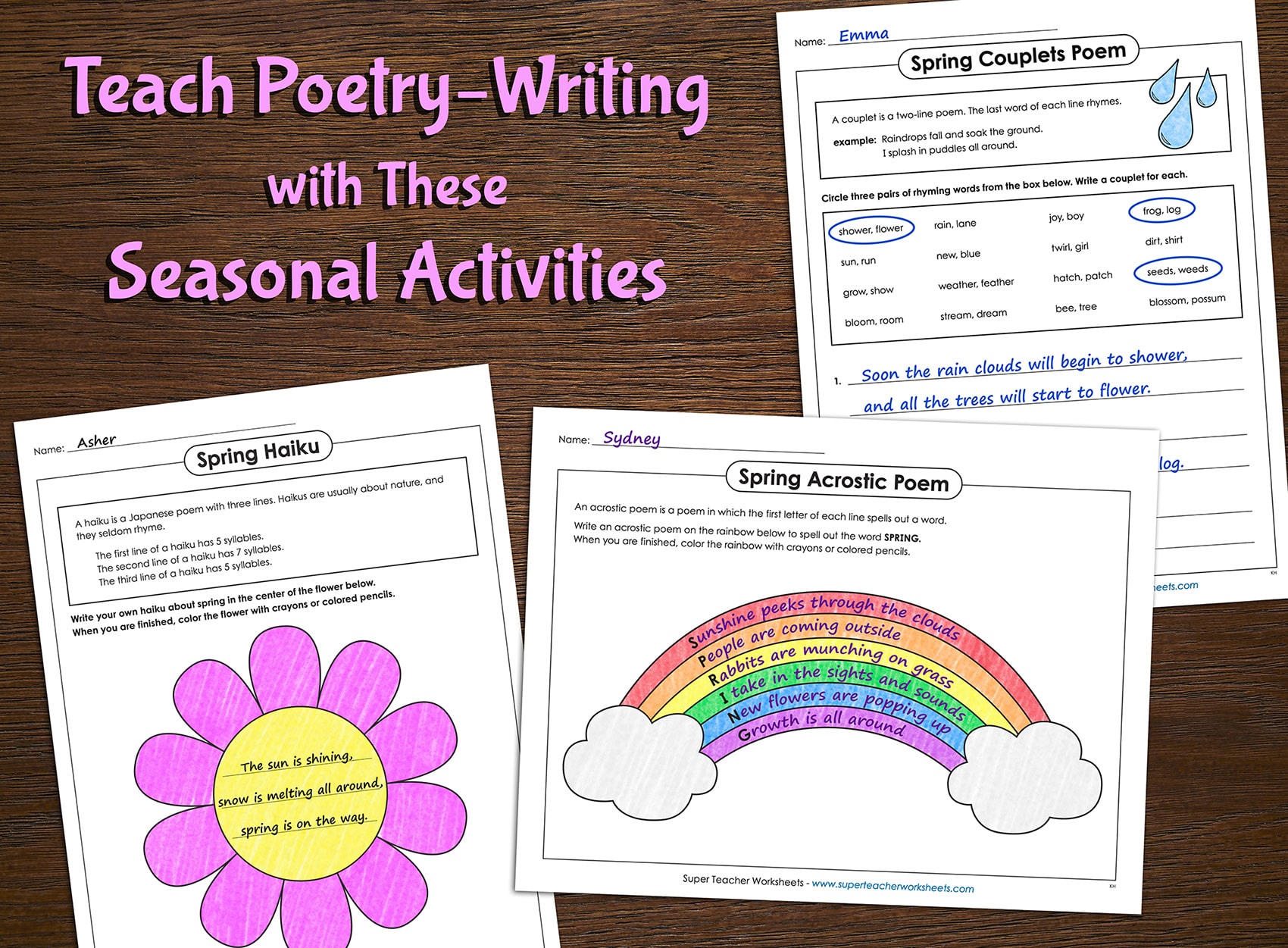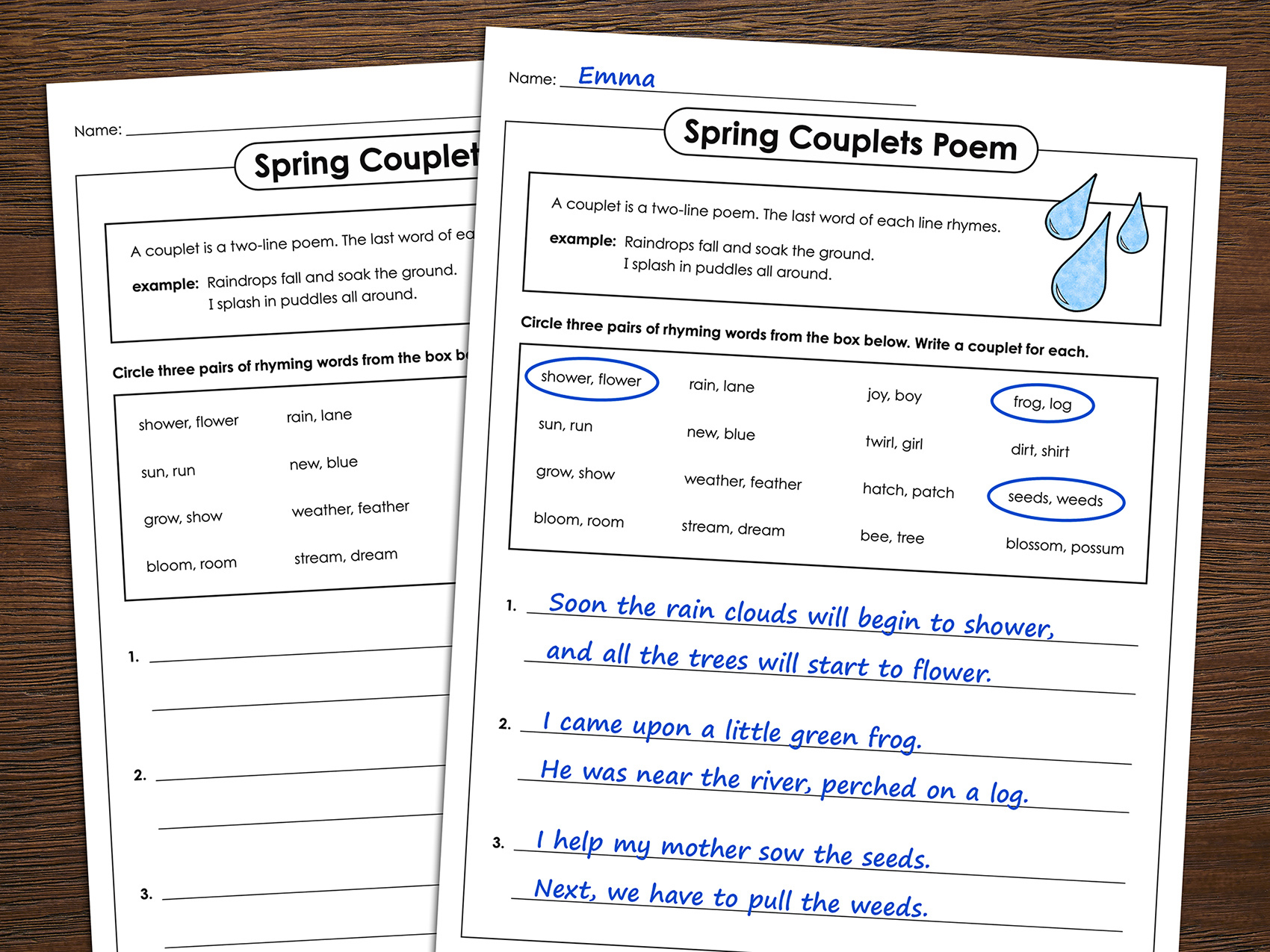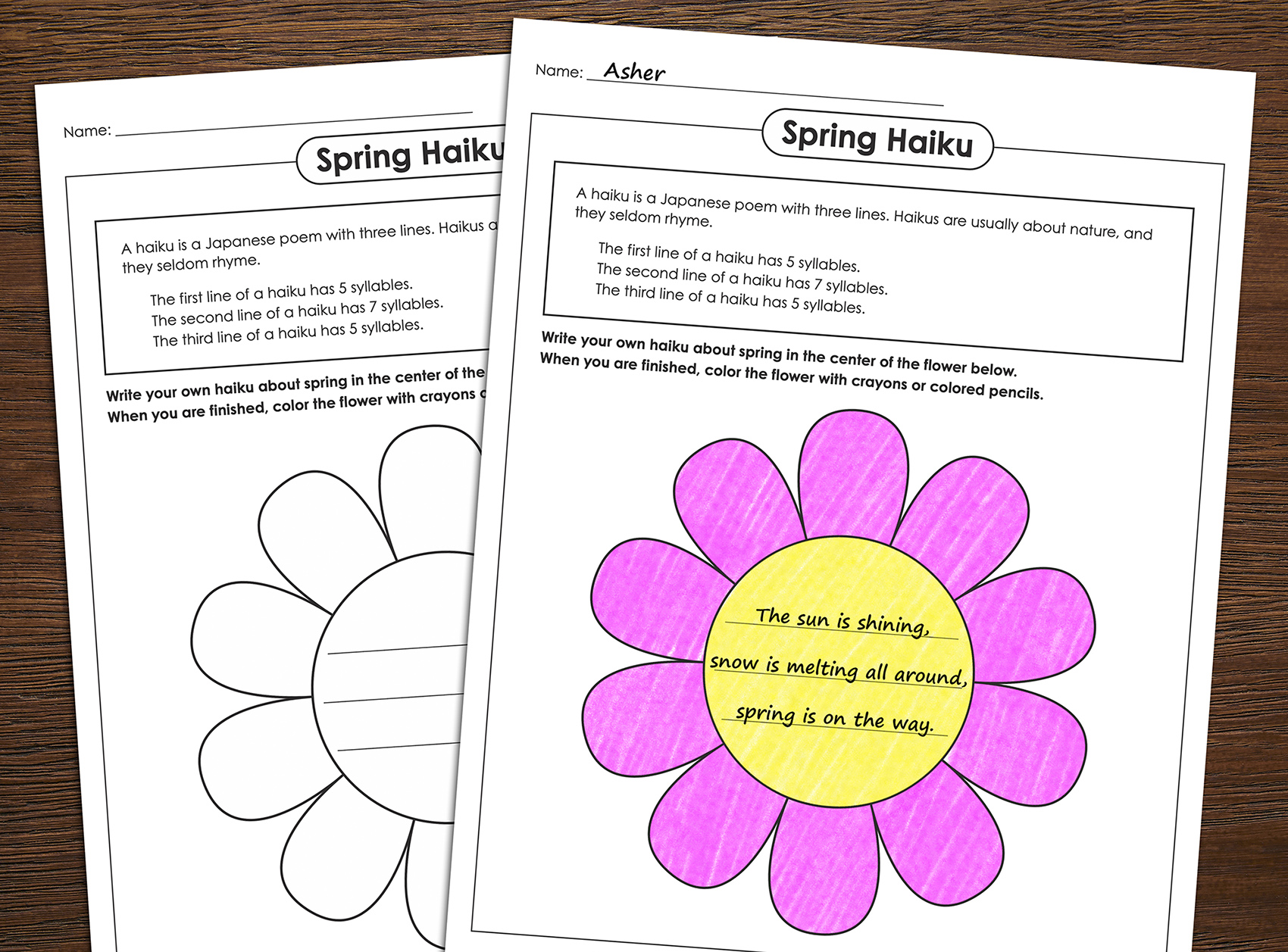
Grow creative writing skills with three seasonal poetry activities for kids! In our May blog post, we're featuring three poetry writing exercises you can do with your students to celebrate spring. Get ready to practice acrostic poetry, couplets, and haiku poetry. We have even included several printable worksheets to make these activities easy and convenient! Read on to find out more.
Poetry can be a tricky topic to tackle with little ones. That's why it's helpful to center your poetry lessons on a specific type of poem, poetry concept, or theme. In the following activities, students will think about the beauty of spring as they write three kinds of poems: acrostic, couplets, and haiku. To make these English language arts activities even easier, we have included a printable worksheet to use for each poem.
These spring poetry activities are ideal for students in second grade, third grade, fourth grade, and fifth grade.

An acrostic poem is a fun and easy introduction to basic poetry! In an acrostic poem, the first letter of each line spells out a word or a phrase. For this activity, children will write out their acrostic poem to spell out the word, "SPRING."
Print out this spring acrostic poem worksheet for each of your students. Children will write short, descriptive phrases about spring beginning with the letters S-P-R-I-N-G, as the phrase appears across each band of the rainbow.
When students have finished their poem, they can color their spring rainbow with crayons or colored pencils and read their poem to the class.
Hang up your class's rainbow poetry creations for some festive spring decor!

Acrostic poems typically do not rhyme, but when your students are ready to try their hand at creating rhymes, these couplets are the perfect activity! Basically, a couplet is a two-line poem. In a couplet, the last word of each line rhymes.
Print out this spring couplets poem worksheet for each of your students. Children will circle three pairs of rhyming words from the box. Then they will write a spring-themed couplet for each on the lines provided.
If you wish, have students choose one of their couplets and depict it with a hand-drawn picture on the back of the worksheet. Children can take turns reading their spring couplets and sharing their artwork with the class.

When your students are up for a poetry challenge, they can try writing haiku poetry. A haiku is a traditional Japanese poem with three lines. A haiku poem does not rhyme. It is typically about nature, which makes it an ideal poem for spring.
Print out this spring haiku poem worksheet for each of your students. Children will choose a topic for their haiku that has to do with spring. Examples include rain, flowers, ducks, sun, breeze, clouds, plants, and so on. Students will write their haiku poem within the outline of the flower following the traditional pattern of a haiku:
The first line has five syllables.
The second line has seven syllables.
The third line has five syllables.
When students have finished their poem, they can color their spring flower with crayons or colored pencils and read their poem to the class.
What do you think of these spring poetry activities? We'd love to hear from you! Share your feedback in the comment section below.
Be sure to tag @superteacherworksheets on social media so we can admire your class's springtime poetry!
Looking for more poetry-writing activities for kids? Visit the Super Teacher Worksheets Poetry Page.
You may also like: